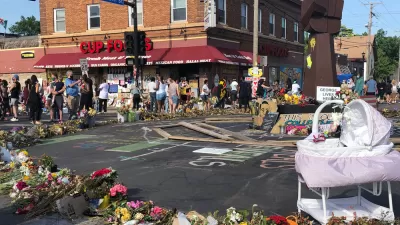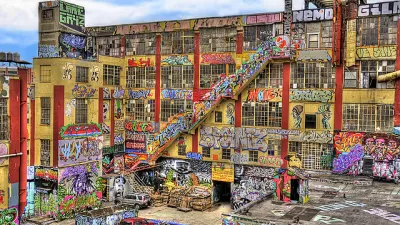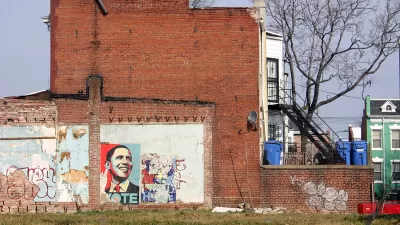Using laser technology, two artists have created a new type of "temporary graffiti" -- light shows that use public places as canvasses for their laser art.
"While most graffiti crews use spray paint to mark buildings and urban infrastructure, Roth and Powderly, the artists behind the Graffiti Research Lab, have perfected a unique form of temporary high-tech graffiti they call laser tagging that utilizes a laser pointer in lieu of paint, a projector in place of a spray. Instead of hitting dark subway tunnels and back alleys, they turn their attention to public places such as skyscrapers and monuments. A growing legion of fans turn out regularly to witness live demonstrations of their light shows (see video of their latest graffiti missions), but most log on en masse to watch videos of the events on such sites as YouTube and GraffitiResearchLab.com. A few hundred have even downloaded the needed computer code and instructions - something the "open-source" artists encourage people to do - to replicate Powderly and Roth's art in cities around the world. As a result of their soaring online popularity, the two artists have been sought out by a number of prominent curators in the art world - most recently by those at the Museum of Modern Art in New York - who see in their digital etchings a convergence of street art, graffiti art and urban cinema."
FULL STORY: Graffiti 2.0: Gone by Morning

Alabama: Trump Terminates Settlements for Black Communities Harmed By Raw Sewage
Trump deemed the landmark civil rights agreement “illegal DEI and environmental justice policy.”

Planetizen Federal Action Tracker
A weekly monitor of how Trump’s orders and actions are impacting planners and planning in America.

How Atlanta Built 7,000 Housing Units in 3 Years
The city’s comprehensive, neighborhood-focused housing strategy focuses on identifying properties and land that can be repurposed for housing and encouraging development in underserved neighborhoods.

In Both Crashes and Crime, Public Transportation is Far Safer than Driving
Contrary to popular assumptions, public transportation has far lower crash and crime rates than automobile travel. For safer communities, improve and encourage transit travel.

Report: Zoning Reforms Should Complement Nashville’s Ambitious Transit Plan
Without reform, restrictive zoning codes will limit the impact of the city’s planned transit expansion and could exclude some of the residents who depend on transit the most.

Judge Orders Release of Frozen IRA, IIJA Funding
The decision is a victory for environmental groups who charged that freezing funds for critical infrastructure and disaster response programs caused “real and irreparable harm” to communities.
Urban Design for Planners 1: Software Tools
This six-course series explores essential urban design concepts using open source software and equips planners with the tools they need to participate fully in the urban design process.
Planning for Universal Design
Learn the tools for implementing Universal Design in planning regulations.
Jessamine County Fiscal Court
Caltrans
Institute for Housing and Urban Development Studies (IHS)
City of Grandview
Harvard GSD Executive Education
Toledo-Lucas County Plan Commissions
Salt Lake City
NYU Wagner Graduate School of Public Service





























